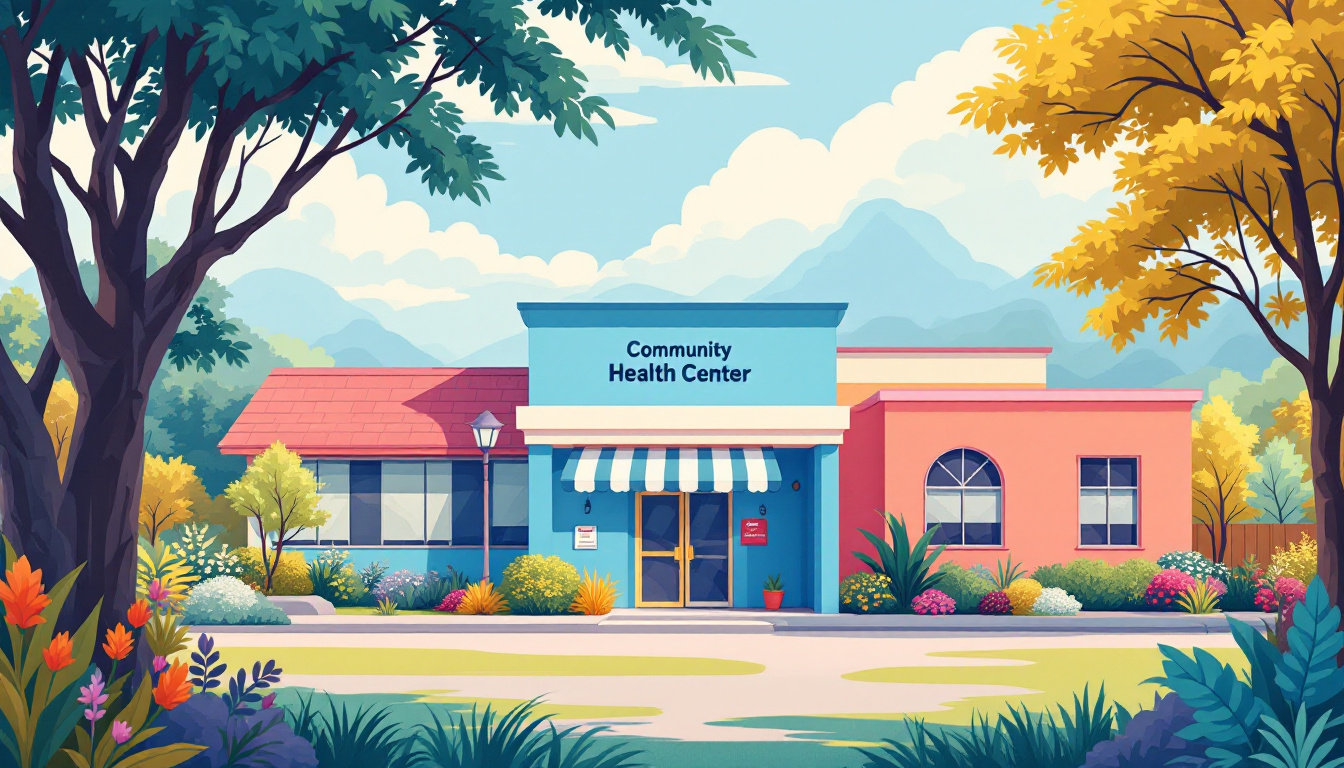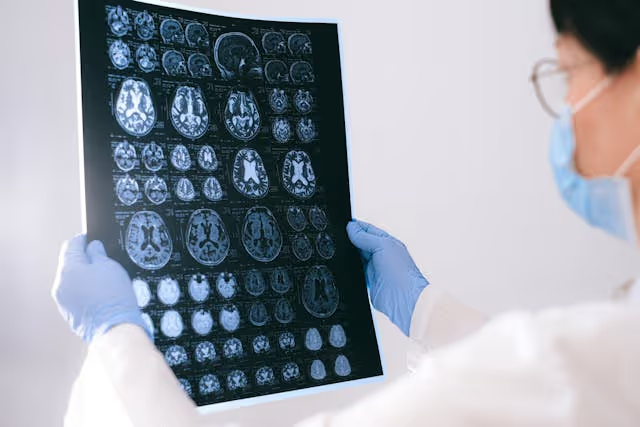How to Choose the Right Short-Term Rehabilitation Facility
April 2, 2025
Essential Steps for Selecting the Best Rehab for Your Recovery Needs


Introduction to Short-Term Rehabilitation Facilities
Selecting the right short-term rehabilitation facility is a crucial step in the recovery journey for those recovering from serious injuries, surgeries, or illnesses. Whether you're considering options after a hospital stay or proactively planning for your health needs, understanding the key elements of choosing the right facility can greatly impact recovery outcomes. In this guide, we walk you through the steps and considerations for selecting a facility that aligns with your medical needs, financial situation, and personal preferences.
Understanding Your Needs and Available Options

Assessing Personal Treatment Needs
Before selecting a short-term rehab facility, it is essential to assess your individual treatment needs. This includes a thorough evaluation of your substance use history, such as the types and duration of substances used, and any co-occurring mental health issues. Understanding these factors will guide you in choosing a facility that can provide the appropriate level of care tailored to your situation.
Different Levels of Care
There are various levels of care available in rehab services, each designed to meet different needs:
- Inpatient Rehab: Offers 24/7 support and a structured environment. Ideal for those needing intensive care.
- Partial Hospitalization Programs: Provides daily therapy while allowing patients to return home.
- Outpatient Programs: Offers flexibility, enabling individuals to attend therapy sessions while managing daily responsibilities. Selecting the right level of care is crucial in ensuring effective treatment.
Importance of Staff Qualifications
Quality rehab facilities have a well-trained, diverse staff including medical doctors, licensed therapists, and specialized counselors. Accreditation from reputable organizations like CARF or The Joint Commission further ensures that the facility adheres to high standards of care. A knowledgeable team is vital for a holistic approach to recovery.
To answer the essential question: How do I choose a short-term rehab facility? Choosing the right facility begins with assessing your unique needs related to substance use and healthcare. Look for accredited centers that provide the appropriate level of care, and verify the qualifications of the staff. This thorough evaluation increases your chances of a successful recovery.
| Factor | Description | Importance |
|---|---|---|
| Personal Treatment Needs | Individual assessment of substance use | Guides facility selection and treatment types |
| Levels of Care | Types of programs (inpatient/outpatient) | Matches treatment intensity to patient need |
| Staff Qualifications | Training and certifications of staff | Ensures quality and effective support |
Key Considerations for Evaluating Rehabilitation Facilities

What questions should I ask when choosing a rehab facility?
When choosing a rehab facility, consider asking the following critical questions:
- Licensing and Accreditation: What type of licensing and accreditation does the program have? Look for accreditation from reputable organizations like CARF or The Joint Commission.
- Evidence-Based Treatment: Is the treatment evidence-based, and what does it entail? Understand if the facility follows established guidelines for addiction treatment.
- Customized Treatment Plans: How are the treatment plans customized to meet individual needs? Ensure the facility develops personalized rehab strategies involving physicians and therapists.
- Staffing and Care Levels: What level of staffing and care can I expect? Investigate staff-to-patient ratios and their availability for 24-hour support.
- Range of Treatment Programs: Inquire about the types of treatment programs offered, including detox and inpatient/outpatient options.
- Amenities and Comfort: What amenities are provided to enhance comfort during the recovery process? Consider options like recreational activities, nutritional programs, and accommodations.
Accreditations and Licensing
Ensuring that a rehabilitation facility holds proper accreditations is paramount. Facilities accredited by organizations like CARF or The Joint Commission indicate adherence to high treatment standards. This adds an essential layer of trust for patients and families seeking effective care.
Facility Amenities and Services
While the quality of clinical care is vital, the amenities available at a facility can significantly impact recovery outcomes. Look for:
- Comfortable accommodations
- Nutritious meal options
- Engaging activities or therapies These aspects contribute to overall well-being during the rehabilitation process, promoting a more favorable environment for recovery.
Quality of Care
Quality of care is the most critical aspect of any rehab facility. High-quality care ensures that patients receive the appropriate medical support for their recovery. Key elements include qualified staff, low patient-to-staff ratios, and specialized therapy programs designed for various needs. The efficacy of rehabilitation is often reflected in the success rates and client satisfaction, making thorough research essential when selecting a facility.
Navigating Insurance Coverage and Financial Considerations

Understanding Medicare Coverage
Medicare plays a significant role in covering rehab services for eligible individuals. Part A typically covers inpatient rehabilitation care but comes with certain conditions. For instance, the facility must meet the 60% rule, meaning at least 60% of its patients need to be discharged with specific qualifying conditions. This includes serious surgical recoveries, strokes, and other acute medical issues.
Payment Options Available
Patients exploring rehab facilities should assess available payment options to reduce financial strain. Most centers accept private insurance, while others offer sliding scale fees based on income. This flexibility can significantly benefit those who may not have comprehensive coverage or fall outside the standard insurance qualifications.
Sliding Scale Fees
Sliding scale fees enable facilities to adjust costs based on patients’ financial capability, ensuring more individuals can access necessary care. This can alleviate concerns regarding affordability, particularly for uninsured or underinsured patients seeking rehabilitation services.
| Payment Option | Description | Notes |
|---|---|---|
| Medicare Part A | Covers inpatient rehab under specific conditions | Must adhere to the 60% rule |
| Private Insurance | Varies by provider; check for specific coverage | May cover different types of rehab services |
| Sliding Scale Fees | Adjusted fees based on income level | Supports underinsured patients in accessing care |
Understanding these financial considerations is vital to ensure successful navigation of rehab options.
Evaluating the Environment and Support Systems

Facility Tours and Staff Demeanor
Visiting rehabilitation facilities, whether in-person or virtually, can provide critical insights into the environment and care provided. During a tour, observe the cleanliness of the facility, the presence of safety features like grab bars, and how the staff engages with residents. A welcoming and attentive staff demeanor can suggest a supportive atmosphere that encourages recovery.
Reputation and Success Rates
Researching a facility's reputation through online reviews, word of mouth, and recommendations from healthcare professionals is important. Inquire about the success rates of previous patients, including the frequency of successful discharges. High success rates often indicate effective rehabilitation practices and quality of care, aligning with the goal of restoring independence.
Importance of Location and Family Visits
The location of a rehabilitation facility can significantly impact recovery. Choosing a facility close to family and friends can facilitate easy visits, which are essential for emotional support. Accessibility for family can foster a positive recovery environment, making it a key consideration in the decision-making process.
Evaluating these aspects can play a crucial role in selecting the right rehabilitation center that meets personal needs.
Structure and Elements of an Ideal Rehabilitation Facility

How should an ideal rehabilitation center be structured?
An ideal rehabilitation center should emphasize a comprehensive treatment program. This begins with a clinical director holding at least a master's degree to ensure that evidence-based practices are effectively implemented in the treatment process.
Frequent counseling sessions, both individual and group, are essential. They address unhealthy behaviors and provide peer support, key elements for recovery. A significant focus should also be given to co-occurring mental health disorders, since many individuals in recovery struggle with these issues. Therefore, an integrated treatment approach addressing both substance use and mental health is critical.
Elements of a Recovery-Oriented Program
Long-term treatment plans lasting a minimum of 90 days are ideally recommended. Such duration allows for a deeper engagement with recovery processes. Nutrition and exercise are also critical components; they foster overall well-being and contribute positively to recovery outcomes.
The Role of Family Involvement
Family involvement plays a vital role in rehabilitation. Facilities should facilitate connections between patients and their families, as these support networks are invaluable for success. Offering programs that integrate both Western and Eastern treatment modalities can significantly enhance the treatment experience, furthering the chances of recovery success.
In summary, the structure of an ideal rehabilitation facility must focus on holistic treatment, incorporating diverse elements that nurture both mental and physical health.
Conclusion: Informed Decisions for Optimal Recovery
Choosing the right short-term rehabilitation facility requires careful consideration of various factors, including quality of care, accreditation, insurance coverage, and personalized services. By understanding your specific needs and utilizing the insights provided in this guide, you can make informed decisions that support a successful recovery and transition back to everyday life. Remember, the right facility not only addresses immediate health concerns but also plays a pivotal role in achieving long-term wellness and independence.
References
- National Helpline for Mental Health, Drug, Alcohol Issues - SAMHSA
- How Do I Choose The Right Rehab? - American Addiction Centers
- What to Expect During a Short-Term Rehab Stay - Beacon Hill
- Choosing the Right Stroke Rehab Facility
- After Hospital Care: Skilled Nursing Facilities or Short-Term Rehab
- Inpatient Rehabilitation Care Coverage - Medicare
- The Right Place for Your Recovery: Choosing a Short-Term Rehab ...
- How to Choose a Short-Term Rehab & Skilled Nursing Facility
- How to Choose Between Short Term Rehabilitation Facilities
























































































.jpeg)











































































































































































































.avif)























































.jpeg)

































































.jpeg)














.jpg)









































.jpeg)









































































.avif)




.avif)

















































.avif)









































































































































































